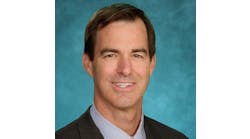It goes without saying that everyone in healthcare generally has similar objectives. In short, we all seek better outcomes and higher quality of care for patients. However, while these goals are shared within our industry, it is our expectations and approaches toward achieving these end results that, more times than not, separate us from one another.
Please keep in mind, I am a firm believer that one solution does not fit all patients. Too many times I’ve encountered instances where a cookie-cutter mentality was employed with a patient when more flexibility was needed. We should be engaged constantly in seeking the right combination of products and services that fit our individual patients’ needs, even if that means we open the door to unfamiliar formulas of thinking.
Please keep in mind, I am a firm believer that one solution does not fit all patients. Too many times I’ve encountered instances where a cookie-cutter mentality was employed with a patient when more flexibility was needed. We should be engaged constantly in seeking the right combination of products and services that fit our individual patients’ needs, even if that means we open the door to unfamiliar formulas of thinking.
I also believe patients, now more than ever, need guidance during their care. There are countless examples of people monitoring themselves, alone, and going to the Internet to read healthcare information on a variety of medical sites and blogs, as they try to take care of themselves. More times than not, this solitary pursuit heightens patients’ anxiety levels and clouds their expectation relative to both their condition and treatment.
These examples have shown me the gaps in our industry in terms of engaging patients and creating care ecosystems that are conducive to their long-term compliance. We must understand that, as we continue to make advancements in technology, we need to allow space for what I call positive influencers to participate in a patient’s care. I have found that the chief difference between a successful outcome for a patient and one that does not find our desired results is often not a lack of data, nor a lack of technology, but rather a lack of a positive influencer in the patient’s care.
A positive influencer can be anyone really – a family member, a teacher, member of a congregation, a co-worker and others. It can be a smaller gesture or a life-changing event, as well. I’ve found that when health strategies are created in such a manner that a positive influencer is allowed to participate and support a plan of treatment, a patient’s behavior can improve dramatically, and instances of positive health outcomes can rise sharply.
No one in healthcare would say that it is our role is to create care environments where it is difficult, if not impossible, for a positive influencer to exist within a patient’s spectrum of treatment, however, our technologies and practices frequently do just that. Unfortunately, it is all too often that our tireless efforts to diagnosis illnesses, to generate and interpret large volumes of data and to integrate information and network systems leave little room for a positive influencer to exist. While the data is vital and our technical expertise is irreplaceable, sometimes it is the simple act of paying positive attention to a patient that has a great deal to do with his or her care outcome.
A positive influencer is not an obstacle in our way that must be carefully considered. Rather, it is a tool that should be engaged actively by our industry with the aim to empower patients to take the lead in their care. By enabling the presence of a positive influencer, and in turn, facilitating the empowerment of our patients, healthcare has a fighting chance in its pursuit for better outcomes and higher quality of care. By ignoring these points, we are making our jobs more difficult, if not impossible, to achieve.
Many think that it requires huge expenditures of resources and time in order to accomplish the goals I have outlined, however, it has been my experience that the most impactful results are generated when an effort is sustained to do more with less. With forethought, not money, we can not only provide patients with the tools they need and the professional monitoring they need, but we can also create an environment where positive influencers can assist them to become real advocates for their own healthcare, and meaningful, long-term behavioral changes become possible. If such thinking does not occur more often, we will continue to struggle and never truly make the progress our patients deserve.
HMT editor’s note: We will follow three Alere Connect projects over the next several months to see the principles described above in action. By creating reports describing how Alere Connect technologies and services enhance population health via the inclusion of a positive influencer, we hope other companies will seek out similar opportunites with their own solutions.



